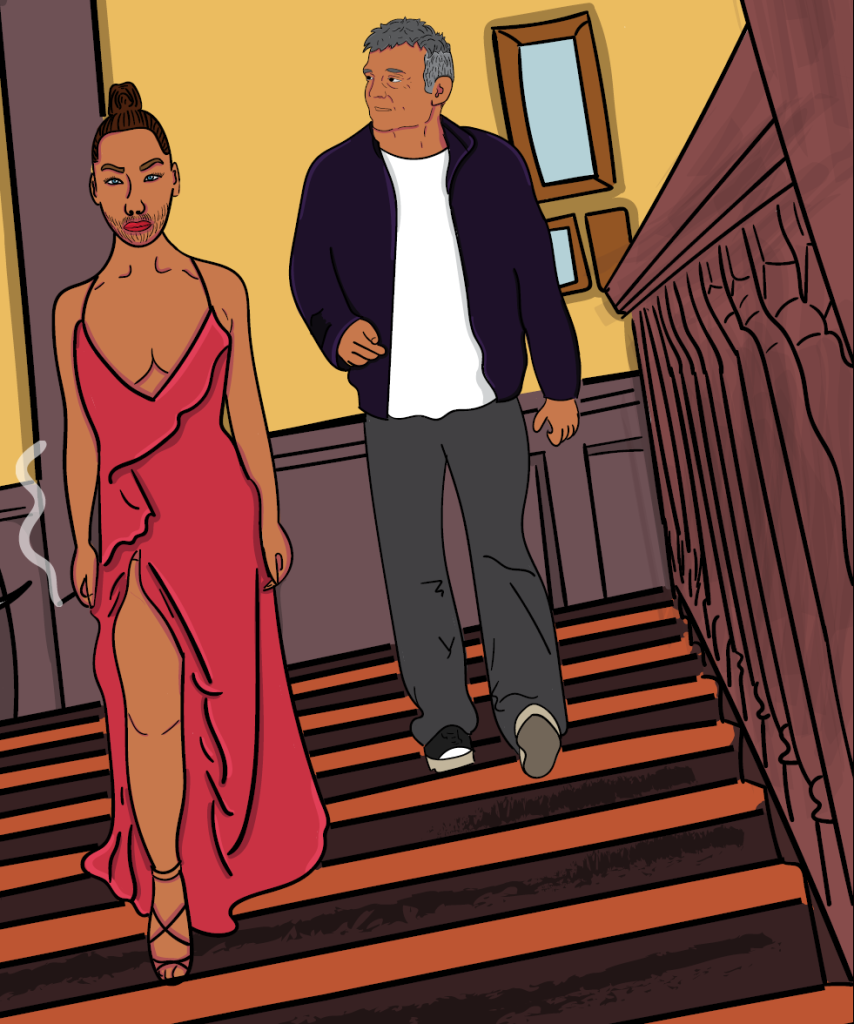
In Praise of Quixotic Play
by Artrit Bytyçi
When we began work on Arnautistan Noir as part of the Lumbardhi Foundation’s QARK Fellowship, none of us had previously worked on a comic book before. It was going to be a process of discovery and experimentation.
While my writing always carried some (subtle) comic book influences I had never written one per se. The same was true for Ardi Shishko, who as an art student at the time was distinguishing himself as a graffiti artist. It is safe to say that we embarked on this adventure without a clear idea of how it would end or how long it would take.
But that’s the beauty of art as a vehicle of discovery, not only of the creative process but also of yourself. And so, Ardi and I ventured into an unknown territory full of self-confidence and self-assurance.
We were not unlike Don Quixote and Sancho Panza. They often get a bad rep, but I think being quixotic in our day and age is not only a luxury but is also a necessity. To create, especially in a place like Kosovo, you have to be quixotic, and delusional, and dare to dream big (perhaps to the point of craziness). It might be the only way to produce something original with a minimal budget. You have to battle all kinds of windmills — bureaucratic, artistic, traditional, societal — and at the same time try to maintain a modicum of sanity.
But to be quixotic also means to dare to play and experiment. And that’s what we did while creating the first episode of Arnautistan Noir. It starts as a detective story set in an alternate history universe where Prizren is the capital of the imaginary Arnautistan, and the place where the once declining Empire was transformed into a Confederation. In other words, we played with history.
In Arnautistan Noir, the kind of grandiose history we are used to within the Balkans — the one that exerts its weight not only on the way we live our lives but also imbues us with a sense of heavy responsibility — is transformed into its more cartoonish version.
In Ardi Shishko’s illustrations, this alternate Prizren first appears the same as the old town seen from the castle in real life, but then, in the distance, we are met with the sprawling metropolis. This metropolis becomes a character of its own, with cameos throughout different scenes: starting from the cover, where it presides over the re-imagined monument of the League of Prizren, and all the way to the last page where it merges seamlessly with Prizren’s narrow and grimy streets.
One might assume that here the burden and weight of history are loosened up, that the sacred is turned into something mundane, even childish. But they would be mistaken. The world of Arnautistan Noir is just as thorny and provocative, with topics that real history often sidelines. From the graffiti that we see around town, a speakeasy located right next to a mosque, the atmosphere at the nightclub, and all the way to the murder scene, Arnautistan is far from childish. But there still is something childlike in the way it was created.
When a child plays with a toy, they break it apart and put it back together (not necessarily into its original form). In doing so they learn about the world. It is our primordial form of experimentation.
This sense of experimentation without a clear idea of an end result, this quixotic-seeming journey into the unknown, was possible thanks to Lumbardhi Foundation’s decision to pair up a (somewhat) experienced artist with one who is up and upcoming, as part of QARK Fellowship. This incidentally is also the modus operandi that I tried to implement at my StoryLab initiative, where beside experimentation being one of our main tenets, we try to include as many young creators in many of our projects. It is a process which is, no doubt, not very efficient but is definitely worth it. Its playful experimentations always produce unexpected results.
This spirit of experimentation is also illustrated when with my composer friend, Liburn Jupolli, we decided to create a soundtrack for Arnautistan Noir. We have done a similar experiment before, by composing music for a literary text in my book The Arbiter. But this time it was different. It was the first time we created a soundtrack for a comic book (my contribution being mainly in feedback and the naming of the titles).
The comic book begins with the music of “Bashibozouks, Rise!” where the oriental and ethnic tunes are intermixed with the bloody atmosphere of the flashback scene. There is a streak of melancholy that accompanies most of the tracks, and adds to the noir vibe. Even the fast chase scenes and those with action like “Fastest Gun in Arnautistan” are colored by the mood of the city. The tracks of “Kurilla Blues” trilogy, or even “Ashk & Sehire,” are an emotional roller coaster that suddenly go from mellow to anxious. The eerie and spooky tunes of “Forensic Wolves” are a perfect contrast to the darkly humorous banter between the characters.
You can see how by the end of this seemingly quixotic quest full of experimentation and play we were able to transform the creative process into one of co-creation. And so, in order to promote and encourage the creation of similar works I would like to introduce KSci-Fi — the publishing imprint, community, and the zine of the Kosovo Science Fiction Society.
Beside promoting all things science fiction — from comic books such as this one, to short stories, novels, essays, research, zines, art books — KSci-Fi will also function as a seal of approval, recommendation, and encouragement.
So, keep on reading my friends, and never stop being a bit quixotic. If those windmills exist in your head, they’re as real as they get. See you at our next issue of Arnautistan Noir.